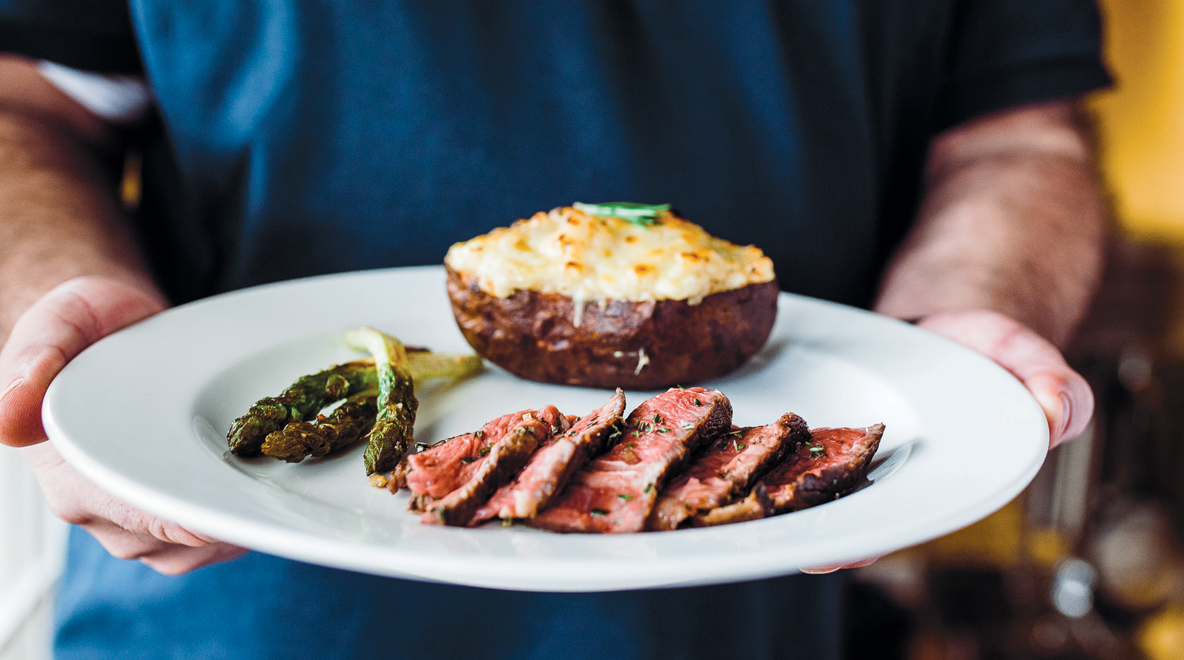Current Events: Sous Vide
“Putting your heart and soul into a meal for someone else to enjoy is the ‘X’ factor that no ingredient can replace.” —Chris Kerrigan
Chris Kerrigan is no stranger to good food. Growing up in New England—Dover, New Hampshire, to be exact—Kerrigan knows what it’s like to have a vast supply of fresh seafood and, at the same time, to be part of a family that didn’t frequent chain restaurants. And it’s those two things combined that led Kerrigan from an early childhood to enjoy the benefits of good food.
A Navy veteran, he used to guide pilots to land their planes on aircraft carriers in rough ocean waters. Nowadays, with just as much precise care, he “directs” a well-appointed home kitchen that includes a number of specialty cooking utensils, doing so with the love and devotion necessary for mouthwatering meals.
Home fries, gwumpkies and the secret to perfect mashed potatoes
“I remember really taking an interest in cooking around the seventh and eighth grade,” says Kerrigan.
“The first thing I recall cooking regularly is home fries,” which, believe it or not, taught him a lot—like not walking away from a cast-iron skillet filled with hot oil on the stove, and the benefits of baking soda when faced with a grease fire. But there are other things about cooking that Kerrigan learned young. “Some of my favorite memories with my mother were in the kitchen,” he says, adding that chicken cordon bleu was the go-to for special occasions.
“That was probably the first ‘grown-up’ dish I learned to make. More than a few dinner parties were had at my house before high school dances where I’d whip up that rich, cheesy, saucy dish. That recipe has stayed with me, in my head, throughout the years and has seen its share of adaptations.”
Kerrigan also recalls his grandmother’s cooking … “I had a Polish grandmother who was quite proud of her gwumpkies [Polish stuffed cabbage]. They were awful! I remember dreading going to Sunday dinner for those unholy pouches of overcooked cabbage stuffed with pork that contained enough whole peppercorns to last the average home cook a lifetime.”
Grandma Stella did redeem herself—or at least his young self ’s version of her—when she’d make mashed potatoes. “It wasn’t until I was in my 30s, long after her passing, that I learned her secret quite by accident: It wasn’t an ingredient, but rather her serving bowls. Apparently old plastic Cool Whip containers impart a ‘special’ flavor to hot mashed potatoes that can’t be duplicated—and probably shouldn’t! But they were tasty.”
Self-caught vs. store-bought
Kerrigan says he really started cooking when he was stationed in Washington, where there was an ample supply of fresh seafood. But being a poor sailor, he says, meant most of his dinners were self-caught rather than storebought. “I recently received a comment on a food picture I posted on social media from an old Navy roommate telling me he missed my cooking. I remember walking him through a shrimp and pasta dish that he was going to make for a prospective girlfriend. He got the girl, so I’d say the dinner was a hit.
“I had planned on going to culinary arts school when I got out of the Navy, but I chose another path (to get married and have a family) and don’t regret it. Restaurant life isn’t the easiest on a family. I feel like I have the best of both worlds now.”
Today, Kerrigan is an operations supervisor for the Indianapolis Air Route Traffic Control Center. His busy schedule has led him to experiment with different cooking techniques, as he says the process isn’t just a means to a meal, it’s therapeutic. One of the methods Kerrigan has learned over the past few years is sous vide—a process of submerging vacuum-sealed food into a water bath heated to a precise temperature.
“Most of the time, getting the correct temperature from sous vide cooking is only one of the steps needed for that perfect ‘whatever’ you’re cooking. There can be a lot of prep work prior to placing your food into the bag.”
Steak is what Kerrigan says he cooks the most using the sous vide method, but he says one would be hard pressed to find something that can’t be cooked sous vide.
“Vegetables, eggs, desserts, cocktails, nacho cheese … I even came across a recipe that uses sous vide for making ice cream this morning.”
But by far, he says, the best thing to sous vide is meat: pork, chicken, lamb or beef, as well as heartier fish like swordfish and salmon. He suggests anyone wanting to try sous vide cooking also bear in mind, that once the food comes out of the water, you still need some kitchen skills to finish your dish like a pro.
“You can use a torch to finish your steaks or other protein,” he says, “and using a torch to cook with is pretty cool.” But a cast-iron skillet works much better.





